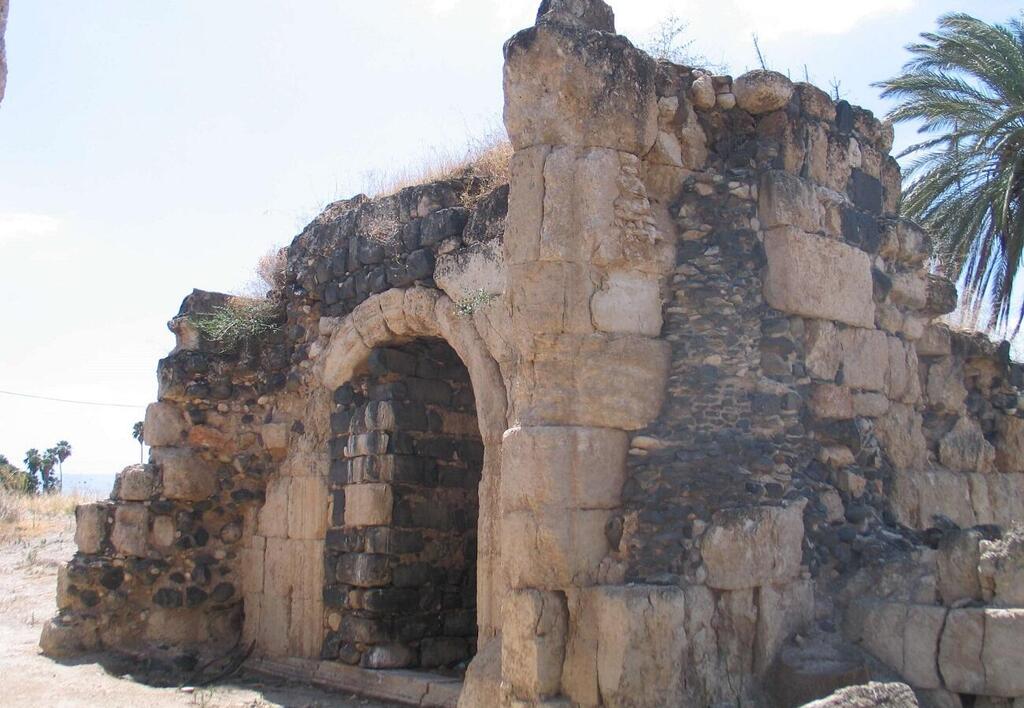Getting your Trinity Audio player ready...
Archeologists discovered a 1,500-year-old mosaic off the coast of the Sea of Galilee that sheds new light on medieval settlements around the large body of fresh water.
During excavations at a site known as Khirbat al-Minya — a vestige of a palace on the northern end of the lake in northern Israel dating back to the rule of the Umayyad Caliphate — a geomagnetic survey of the area by researchers from the Johannes Gutenberg University of Mainz, Germany also found an ancient well.
4 View gallery


Johannes Gutenberg University archeologists in Khirbat al-Minya
(Photo: Hans-Peter Kuhnen)
Umayyad caliph al-Walid I commissioned the construction of the palace and adjacent mosque with a 15-meter minaret in the 8th century on land that was believed to be hitherto undeveloped and uninhabited.
Researchers found basalt buildings dating back to various periods featuring plastered walls, colorful mosaic floors, and a well. The plants depicted in one of the mosaics are particularly striking because they have long and round stems, similar to those depicted in mosaics from the 5th and 6th centuries found on the Nile river.
These mosaics of the flora and fauna originating in the Nile Valley symbolized the life-giving power of the river and its seasonal flooding which sustain ancient Egypt's agriculture.
4 View gallery


Parts of the mosaic discovered near Khirbat al-Minya palace
(Photo: Hans-Peter Kuhnen)
This also explains why later antique churches, such as the nearby Church of the Multiplication in Ein Sheva, and luxurious residences in the cities of late antiquity were decorated with similar mosaics.
The mosaic, along with ceramics found in the area, reveals that settlements along the shore of the Sea of Galilee prospered for centuries before the construction of Khirbat al-Minya.
The original settlers of the region were either Christians or Jews and were later joined by a small Muslim community. The uncovered ceramics suggest that the site under Umayyad rule fell victim to the pickaxes of iconoclasts who raided it and reused the materials in other construction projects.
Researchers also found a stone oven nearby that was used to process sugar cane.
Sugar cane was one of the leading agricultural exports of the Holy Land in the early Middle Ages but required much water and lumber to process which exhausted the area's natural resources — damage that hasn't fully recovered to this day.
"Our most recent excavations show that caliph al-Walid built his palace on the shore of the Sea of Galilee, on land that was already settled before. Even though the area reaped great profits from growing sugar cane, this has caused prolonged damage to the ecosystem, unfortunately," said site manager and archaeologist Prof. Hans-Peter Kuhnen.
"Our research resurrected this town, near the caliph's palace, and put it in the right context in the history of human settlement in the Holy Land, for it has seen over the centuries various periods of ebbs and flows."



